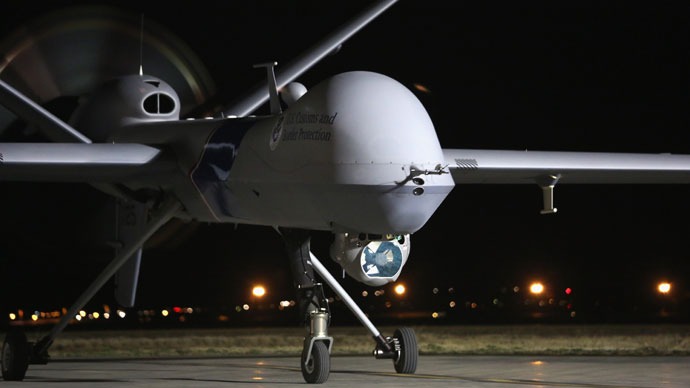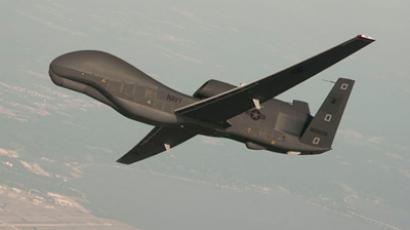Look! Up in the sky! 10,000 drones in US by 2020

The idea of thousands of drones buzzing high above Main Street, USA may sound just a bit too Orwellian for most people. But according to the FAA, the future is already here.
The Federal Aviation Administration (FAA) predicts that swarms
of unmanned aircraft systems could be taking to the skies of
America in the next five years, with up to 10,000 active commercial
unmanned aircraft systems (UAS) patrolling from above by
2020.
Looking at aeronautical trends up to 2032, the FAA projects rapid growth of the UAS industry.
“In the United States alone, over 50 companies, universities,
and government organizations are developing and producing some 155
unmanned aircraft designs,” according to the agency.
In February, the FAA said it had issued 1,428 permits to
domestic drone operators since 2007, a number that far exceeds
previous certifications. Meanwhile, some 327 permits are listed as
active.
This startling rate of growth of a potentially pervasive technology has rights groups expressing concern over privacy issues and the potential for abuse of power.
Mission creep
The American Civil Liberties Union (ACLU) in Dec. 2011 published a study entitled, ‘Protecting Privacy from Aerial Surveillance’ that warned of the possible “mission creep” associated with the use of drone technology.
“Based on current trends—technology development, law enforcement interest, political and industry pressure, and the lack of legal safeguards—it is clear that drones pose a looming threat to Americans’ privacy,” the ACLU stated.
The report then provided a disturbing glimpse of a future where unmanned aircraft systems take front and center in the law enforcement’s tool box:
“Fleets of UAVs, interconnected and augmented with analytics software, could enable the mass tracking of vehicles and pedestrians around a wide area,” the study revealed. “The use of drones could also be expanded from surveillance to actual intervention in law enforcement situations on the ground.”
The ACLU suggested that the new airborne technologies could even be used to “dispel protesters (perhaps by deploying tear gas or other technology), stop a fleeing vehicle, or even deploy weapons.”
US Attorney General Eric Holder recently defended the use of lethal military force against an American in his home country, saying it would be considered legal and justified in an "extraordinary circumstance.”
"The President could conceivably have no choice but to authorize the military to use such force if necessary to protect the homeland," Holder added.
See Rand Run
Many people are familiar with UASs from what they know of the US military’s use of them in war zones, where the aircraft can spy on enemy targets, as well as target them with weapons.
At present the majority of American drone strikes have been carried out in Pakistan - 365 strikes, according to a study by the Bureau of Investigative Journalism of the UK. The secret campaign has killed an estimated 4,700 people in Pakistan, Yemen and Somalia; one quarter of the victims are estimated to have been civilians.
The London-based organization added that drone strikes killed between 474 and 881 civilians – including 176 children – in Pakistan between 2004 and last year.
Such attacks, which by their very secretive nature lack transparency, have placed a strain on US relations with its allies in the region. It has also made Americans very suspicious as to what purpose their government will use this technology, especially after the Obama administration said it reserves the right to kill Americans who are believed to pose a threat to national security - without any due process whatsoever.
Although nefarious bad guys, like al-Qaeda, are regularly identified as the target of extra-judicial assassinations, critics wonder if the new sweeping powers may one day apply to other groups that become a headache for Washington.
On March 6-7, Senator Rand Paul conducted what the Washington Post said was the 9th-longest filibuster in an effort to protest the use of drone strikes against American citizens.
“Are you going to just drop a hellfire missile on Jane Fonda? Are you going to drop a missile on Kent State,” he asked in the course of his epic 13-hour marathon delivery during the nomination process of John Brennan as the new director of the CIA. "You can't be judge, jury and executioner all in one.”
Rand cited the Fifth Amendment of the US Constitution in his criticism of what he believes to be the abuse of the executive office.
“The Fifth Amendment protects you, it protects from you a king placing you in the tower, but it also should protect from you from a president that might kill you with a drone.”














